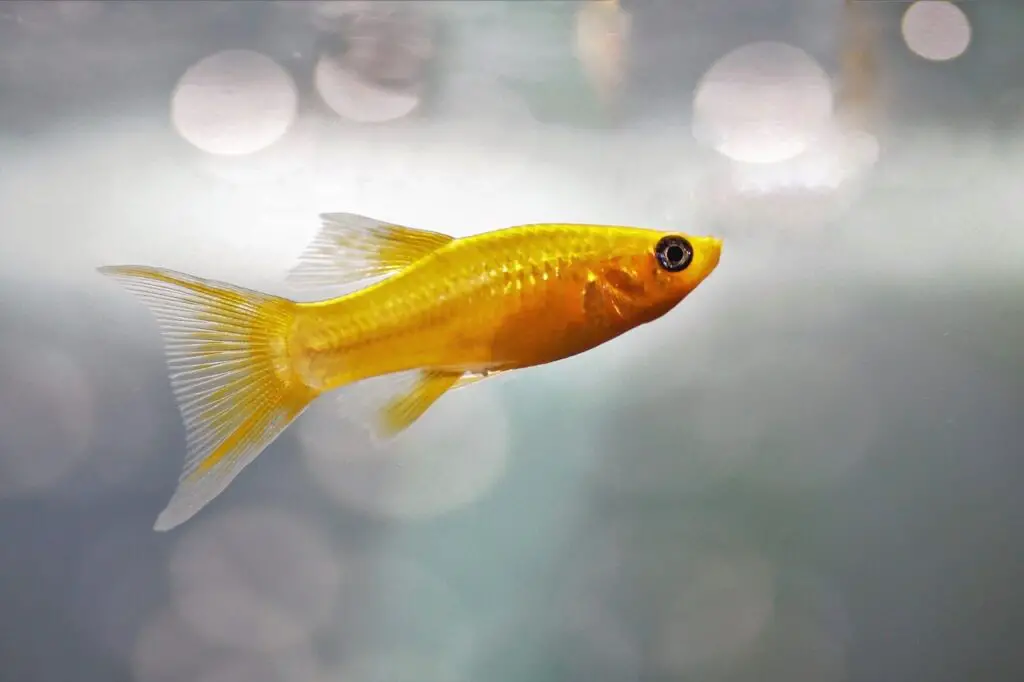Mollies, a fish species, are found in slow-moving rivers and shallow bodies of water in their natural habitats. To recreate a natural habitat for them, a spacious tank should be provided with plenty of tall plants and decorations. However, when introducing new tank mates, it is important to monitor stress levels, as changes in playful behavior can indicate stress.
It is, therefore, important to consider whether mollies prefer current in their habitat. This article will discuss the natural habitat of mollies, how to recreate a habitat for them, and what steps can be taken to reduce strong currents in a fish tank.
Key Takeaways
- Mollies prefer calm environments but can adapt to gentle currents.
- Mollies thrive better with no current but can live in a gentle current.
- Mollies are found in small streams, wetlands, rivers, coastlines, and pools.
- To recreate a natural habitat for mollies, provide a spacious tank with tall plants, use free-floating aquarium plants, add rocks and ornaments for hiding places, and break up strong water currents.
Natural Habitat
Mollies in various natural habitats, such as small streams, wetlands, rivers, coastlines, and pools, typically experience little to no current. These areas provide an ideal temperature range of 23°C to 28°C (75°F to 82°F) and a pH level of 7.5 for mollies. These conditions are necessary for mollies to thrive in their natural environment.
The slow-moving nature of their native habitats reduces the risk of predators and allows them to feed more easily. In addition, they are also able to hide in vegetation and other hiding places. Furthermore, mollies can venture into brackish and saltwater, which gives them a greater capacity to survive in their environment.
Thus, mollies prefer habitats with low current, providing them with optimal safety and comfort.
Recreating Habitats
Recreating suitable habitats for mollies may require avoiding strong water currents. Creating a peaceful environment for mollies is paramount for their well-being and health. The tank size is essential for setting up the right environment for mollies. A smaller tank is best for mollies as it eliminates the risk of strong currents. Aquarium plants, rocks, driftwood, and ornaments add to the aesthetics of the tank and offer hiding places for mollies.
| Action | Rationale |
|---|---|
| Use a smaller tank | Avoid strong current. |
| Add rocks, driftwood, and ornaments | Create hiding places. |
| Break up strong water currents | Make environment more suitable. |
| Create a steady environment | Promote mollies’ well-being. |
| Monitor and maintain water level | Prevent fluctuations in water. |
To maintain a suitable environment for mollies, it is important to understand the potential causes of current and the importance of tank size. Smaller tanks should be used for mollies, and strong water currents should be avoided. By carefully monitoring and maintaining the water level, a peaceful environment can be created for mollies.
Reducing Current
Reducing a strong current in a fish tank is essential for creating a suitable mollie environment.
To achieve this, there are several options available:
- Locate and adjust the flow of the aquarium filter. This can be done by adjusting the settings on the filter or by positioning it in a way that reduces the water flow.
- Use a sponge filter with adjustable flow. Sponge filters are designed to provide gentle filtration and can be adjusted to reduce the current in the tank.
- Block the input or output of the filter to reduce the current. This can be done using filter sponges or other materials to restrict water flow.
- Disperse the outflow toward the back wall or surface of the tank. This can be done by positioning decorations or adjusting the direction of the filter output to create a gentler flow of water.
- Place live plants in the tank to break up the water current. The presence of plants can help to create natural barriers and slow down the flow of water in the tank.
It is important to note that adjusting the water flow and using a sponge filter effectively reduce current and create a more comfortable environment for mollies.
Additionally, monitoring and maintaining the water level in the tank is crucial to prevent excessive water movement.
By taking these steps, you can ensure that mollies have a suitable habitat with a reduced current in their fish tank.

Frequently Asked Questions
Conclusion
Molly fish thrive in calm environments and prefer habitats with no current. To recreate a natural mollie habitat, a spacious tank should have plenty of tall plants and decorations for hiding and free-floating aquarium plants for authenticity.
Several methods can be employed to reduce strong current in a fish tank. First, locate and adjust the flow of the aquarium filter to a lower setting. A sponge filter with adjustable flow can be used as an alternative if necessary. Another option is to block the input or output of the filter to reduce the flow.
In addition, dispersing the outflow can help minimize the tank’s current. This can be done by using a spray bar or placing decorations or plants near the filter output to break up the flow. Live plants can also help to reduce current as their foliage can act as a natural barrier.
When introducing new tank mates, monitoring stress levels in the mollies is important. Any changes in behavior should be noted, and adjustments to the tank setup should be made if necessary. Providing a tank with no current is the best way to ensure the well-being of mollies.

